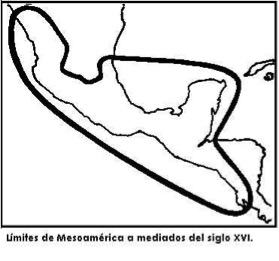What is Mesoamerica? Mesoamerican is a technical term either not recognized or misconstrued (mistakenly used for the entire country of Mexico or the entire country of Costa Rica).
First there are multiple “definitions” of Mesoamerica, depending on whether you are an archaeologist, or a botanist. I start with the archaeological definition.
All of Guatemala, Belize, El Salvador, most of Honduras, and Nicaragua are part of Mesoamerica. Northern Costa Rica is also considered part.
The rest of Costa Rica, Panama, and to the south had their own impressive cultures so have their own names.
Any parts of Mexico occupied by Nahua, Nahuatl speakers or related languages, occupied or allied by trade routes with the Olmec, Teotihuacan, Maya, Toltec, are considered part of Mesoamerica.
The first long-distance traders of Mesoamerica were the Olmecs, then the Teotihuacanas, then the Maya and the Aztecs. The Toltecs influenced well into Guatemala as well but are not as often studied as is Teotihuacan influence (found at Copan Ruinas, Honduras, and throughout Guatemala’s Costa Sur, Highlands (Kaminaljuyu) and most of the Mayan Lowland sites, especially Tikal, Uaxactun, Yaxha, and Holmul (but also others).
So Mesoamerica’s original definition is the areas of the Americas influenced by the Olmec, Maya, Teotihuacan, Toltec, and Aztec (these were the cultures with long distance trade, hence influence down to the edge of Costa Rica). Rather obviously the northern border is changing as archaeologists find additional areas with macaw feathers, cacao seeds, etc.
The reason that “Central America” is an incomplete designation is that Mexico is geographically part of North America down to the Isthmus of Tehuantepec. So “80% of Mexico” is not part of Central America.
This leaves the area from the Isthmus of Tehuantepec down to the border of Guatemala as neither part of North America nor Central America!
In fact Wikipedia contributes to the consistent misunderstandings by throwing in how botanists consider Mesoamerica, which tends to be different than how archaeologists consider Mesoamerica.
The Miztec, Zapotec, Classic Veracruz and all the cultures that had temple pyramids ballcourts, etc are of course also part of Mesoamerica. It’s just that the Olmecs, Teotihuacans, Maya, and Aztec were the most multi-cultural and international.
www.dimensionantropologica.inah.gob.mx/?p=1031
This is a good map of the original areas included in Mesoamerica.
Paul Kirchhoff first defined Mesoamerica
When you study the civilizations of North and Central America you are taught that Paul Kirchhoff first defined Mesoamerica, in 1943.
- 1943
- Mesoamérica. Sus Límites Geográficos, Composición Étnica y Caracteres Culturales". Acta Americana 1 (1): 92–107.
Glossary to define each concept, culturally, geographically, etc:
Needed are better definitions of why the area of Mexico from Isthmus of Tehuantepec is neither part of North America nor included in most definitions of Central America. Here are the common definitions (based on what I learned in grade school, high school, and college).
North America: Canada, USA, Mexico down to Isthmus of Tehuantepec. Most gringos do not realize that most of Mexico is part of North America, as much so as is USA and Canada.
Central America: Guatemala, Belize, Honduras, El Salvador, Nicaragua, Costa Rica, Panama
South America: Everything south of Panama though there are issues for defining the Isthmus of Panama with political border area.
Mesoamerica for archaeologists: areas occupied by, or with specific languages and cultural traits, but primarily the areas occupied or significantly influenced by long distance trade with the Olmecs, Teotihuacanos, Mayas, Toltecs, and Aztecs.
Mesoamerica for botanists is a concept that I would definitely like to learn more about since 80% of my days, evenings, weekends, and holidays are dedicated to learning about, studying, and when funding allows, doing field work about botany of the Mayan areas. Probably half these plants of Guatemala are found in southern areas of Central America. The Missouri Botanical Garden web site defines Mesoamerica as include all the Central American republics and five Mexican States east of the Isthmus of Tehuantepec (Chiapas, Tabasco, Campeche, Yucatán and Quintana Roo). This description by MOBOT is well defined but is very different than the archaeological description. This clearly stated MOBOT description is what I would define as Central America “is everything from Panama up to the Isthmus of Tehuantepec.” But what counts is that the Missouri Botanical Garden clearly defines what they include.
Snag is that this excludes Veracruz, which has produced multiple excellent botanical reports and has most of the genera and many of the same species of plants as do the Mayan parts of Guatemala.
I also notice that this web site uses MBG rather than the traditional MOBOT.
Other botanists seem to consider that botanical Mesoamerica includes Mexico south to Panama, so all of Mexico and all of Panama.
Latin America general means all of Mexico, Central America, and South America.
Pre-Columbian (also occasionally spelled precolumbian) means before the arrival of Columbus. Prehispanic (or Pre-Hispanic) means before the arrival (of the generic) Spanish. So these are names for historical periods, not as much for geographical areas.
First posted: 3rd week of November, 2018














































































